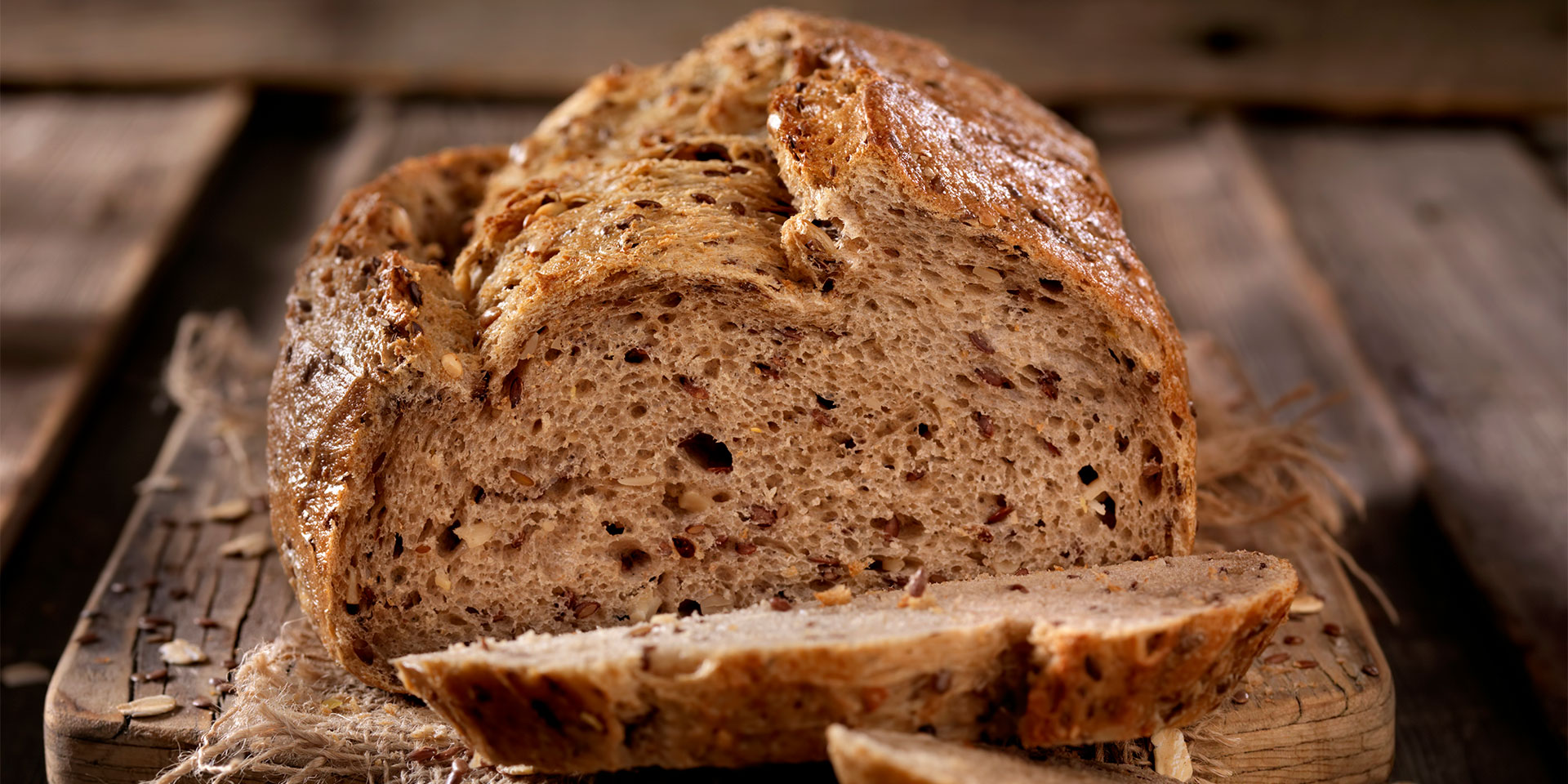This article deals with principles that we know on a theoretical level, but don’t really apply in our daily lives. If certain things are true, why are we so reluctant to change?
The Nazi concentration camps were a demonstration of the horrors that potentially lie within people, within all mankind. People who tenderly kissed their children at home became beasts in the concentration camps where they had acquired power over strangers with whom they had never even quarrelled. However, surprisingly, this earthly hell also gave rise to demonstrations of the greatness and dignity of the individual. In those spaces that had been emptied of human rights, the filth and splendour of morality were separated only by thin air.
Bread and life
An emotionally-charged illustration of this truth is an episode narrated by William Schiff, in the book he wrote with his wife, Rosalie Schiff, and Craig Hanley, entitled William & Rosalie: A Holocaust Testimony. In one of the last chapters, William recalls how, at one point, when he was dying, he was rescued by an optimistic Viennese chemist. This kind man first gave him water, then fed him soup with a spoon, since William could not feed himself. He taught William that the bread they received in the morning should be divided into three pieces which should last all day; so they divided their loaves of bread into three smaller pieces each.
“This man gave his whole life to me.”
“We put all six pieces of bread on the edge of my bunk. Then we started the experiment with the morning ration. He said:
– Chew it slowly
I ate the first piece nice and slow… He sat on the floor, his back against the bunk and talked a lot to help pass the time… He was from Vienna and wanted to go home and become a professor. He wanted to have a family and publish papers and so on… I was so torn up with hunger I ate my second piece of bread before the first hour was up. He saw me reach out and grab it, but he didn’t scold me because he didn’t want to hurt my feelings. He didn’t say anything an hour later when I ate my last piece. And he didn’t say anything even when I ate his second piece of bread. It was a terrible thing for me to do, but I couldn’t stop myself. He saw me do it and kept right on talking. At supper time… he reached for the last piece of bread. I had been craving this little crust for hours. It had taken all my self-control to keep from grabbing her and shaming myself again.
He raised it to his lips and was just about to put it in his mouth. Then he stopped… He must have felt my eyes, because he put the bread in my hand. Then he started talking again about how much he loved Vienna… This man gave his whole life to me. To a virtual stranger. Like it was nothing.”
For William and his friend, bread was the equivalent of life. This has been the case for a long time in human history. There’s a reason why the most famous prayer in Christianity refers to “our daily bread,” just as there’s a reason why “putting bread on the table” means earning enough to make a living. Today, there is a small number of people who live without bread, but most still consume at least one slice a day of this taken-for-granted food.
Why is brown bread important for health?
Even though bread sustains life, not all bread is created equal. Wikipedia mentions over 150 types of bread, from Aish Merahrah (Egyptian bread made from ground fenugreek and corn), to the German Zwieback (bread made with egg and baked twice). And the list is still incomplete. In Romania too, we have a variety of types of bread, but we can mainly reduce this diversity to two categories: white bread (with refined flour) and brown bread (often with rye flour or, in short, rye bread). The brown type contains whole grains (whether it is wheat, rye, oats or others) and is healthier. Whole grains contain vitamins, minerals, fibre and other substances which have positive effects on human health. The refining process required to make white bread leads to the loss of considerable amounts of fibre, as well as the loss of other nutrients.
Even though bread sustains life, not all bread is created equal.
Numerous studies on large population groups have consistently revealed at least three major benefits of a diet that includes whole grains (in the form of bread or other foods):
- Lower risk of cardiovascular disease (in these studies, the higher the proportion of whole grains in the diet, the lower the risk of cardiovascular disease);
- Lower risk of diabetes (the lower the amount of whole grains in the diet, the higher the risk of diabetes);
- Body weight maintenance (people who eat more whole grains gain less weight than those who eat refined grains).
To avoid any confusion, the observed benefits refer to the consumption of whole grains in general, and not necessarily to the consumption of bread. But, in Romania and in most of the world, whole grains are most commonly consumed in the form of bread and various breakfast foods (cereal, granola, etc). For now, we will stick to bread in this discussion.
Why we don’t eat brown bread very much
With such benefits, we would expect most people to consume brown bread made with whole wheat flour. However, this is not the case at all: a cross-sectional study, conducted in Romania in 2011, showed that three quarters of Romanians (about 77%) consume white bread.
Brown bread is consumed in Romania by 22% of women and 16% of men.
This situation is not unique, and is present in Western countries as well. In the United States and the United Kingdom, various studies have shown an “extremely low” consumption of whole grains. In the UK, for example, whole grain consumption has actually been dropping in recent years, with 93% of men and 89% of women eating white bread and only 33% of men and 39% of women consuming whole wheat bread in 2005.[1] About 10 years ago, in the United States, out of almost seven servings of grains consumed a day, less than one serving came from whole grains.[2] A recent study, which assessed the consumption of various forms of whole grains by children in Ireland, found that almost 90% of them consume whole grains, but well below the recommended level (less than half of the daily amount of three servings or about 48 grams, recommended for older children).[3]
What does a “serving” mean?
A “serving” is a standard, recommended amount of food that is intended to help a person choose how much to consume, and should not be confused with “portion.” The latter is the amount of the food that is actually eaten at a meal by one person. A “portion” can consist of several “servings”. For example, a “serving” of bread consists of a slice of medium-sized bread. If a person chooses to eat three slices of bread at a meal, that person’s portion includes three servings of bread.[4]
Causes of a lack of interest in brown bread
For a long time, the low interest shown by consumers in this category of whole grains, and in particular towards brown bread, has preoccupied various teams of food researchers. Several studies, using various research tools, have elucidated the main factors that contribute to this state of affairs.
The average consumer tends to put taste considerations before health considerations.
The major cause seems to be represented by taste and other sensory characteristics (colour, texture, etc.). Most studies (conducted in different countries, on different age groups and characteristics samples) have consistently observed that, in the decision to choose foods for purchase and consumption, taste is the main determining factor and that, in most cases, the average consumer tends to put taste considerations before health considerations.[5] In other words, most of us buy food not so much because it is healthy, but because we like it. Many consumers believe that brown bread and other whole grain foods have an inferior taste. “I find it dry and a little bland,” a young man said when asked to describe brown bread. In this sense, a possible solution is to improve the quality of bread produced on a commercial scale in terms of taste.
On the other hand, there also seems to be some prejudice formed over time, since many volunteers who have tested the taste and effects of different types of bread say they are satisfied with the taste of whole wheat bread and continue to use it after the completion of the survey.[6]
White whole wheat flourIt seems that there is a niche market (of healthy and tasty bread) that so far no one in Romania has rushed to occupy. In the United States, ConAgra Mills has introduced a special flour called Ultragrain, which is a (semi) white whole wheat flour that has a taste, texture, and appearance similar to refined flour. It is obtained from a variety of wheat called white wheat (in contrast to ordinary wheat, which is also called red wheat). White wheat has been grown in Australia for several decades, and certain varieties were introduced in the United States in the 1970s and 1980s by cross-breeding with red wheat. Unlike the latter, white wheat does not have reddish-coloured bran, and has a lower content of the phenolic compounds that are responsible for the stronger smell of bread made from whole wheat flour obtained from red wheat. However, not many studies have investigated whether the benefits of white wheat are equal to those of red wheat. In addition, even though there is a study of a group of children that showed that they preferred white whole wheat bread to traditional whole wheat bread, another study in adults found no difference in the degree of preference towards one or the other of the two types of flour.[7] |
Another cause of low consumption of whole grains is poor education in this area. Education alone is not enough to influence consumption patterns in the entire population, but research has shown that when consumers are adequately informed, some of them change their buying and consumption habits. For example, a study showed that adults who were educated on how many “servings” of grains are recommended at a meal consumed more than those who didn’t know, and they consumed more whole grains as opposed to refined ones.[8]
A third cause of the low consumption of brown bread and whole grains is the price, as indicated by studies conducted in the United Kingdom, Spain, and Japan.[9][10] Even though there were periods in which wholemeal flour was consumed in very large quantities and was much cheaper, the Industrial Revolution allowed people to have wider access to refined flour (that was perceived to be of better quality), and thus the consumption of wholemeal flour greatly reduced, and the price increased. Thus, if there was a time when wholemeal flour was the food of the poor, in Britain, by 1865 it had become the food of the rich and a proof of luxury, as attested by a book by a London physician published during this period.[11]
Currently, the difference is smaller, but for both bread and flour, prices are still higher for whole grain products than for refined ones.
The price difference is not justified by costs (costs are probably higher when obtaining white flour), but by consumer interest and sales volume. If most consumers were to use whole grain products, the price ratio would probably be reversed. The price becomes even more relevant if we consider that poorer people have less access to information on proper nutrition.
A fourth cause relates to the problems of accessibility and lack of variety.[12] Since there aren’t many who consume whole wheat bread, the chances of finding it in small shops are lower. In addition, even when you do find it, there are usually only one or two types, even in big supermarkets. So, under these circumstances, the consumer who is bored with a certain bread and wants to make a change will have to buy an assortment of white bread.
One solution would be to prepare bread at home, especially since we now have easy-to-use appliances that have greatly simplified its preparation, and which enable the consumer to make it according to their own taste.
Another issue related to accessibility concerns the presence of whole wheat flour products in restaurants. As one British interviewee put it, “You struggle to find whole wheat bread even in a restaurant—unless it’s a very good vegetarian restaurant.”
Another cause that may contribute to the lack of interest in whole wheat bread is the pressure of family and the social environment. If the wife does not buy brown bread because her husband dislikes it, she will likely not eat it herself (in general, studies show that women are more receptive to the effects of food on health and more willing to eat brown bread than men). Parents, even if they want to eat brown bread, cannot because of the pressure of their children, who reject it. And when you go to visit friends, it’s not nice to make a fuss because the bread isn’t brown enough.
What to do?
There is a relatively high interest in society in making a change in current consumption patterns for brown bread and whole grains. The benefits of whole grains compared to refined ones have been known for a relatively long time, and official recommendations have also existed for a long time. Even so, their adoption as the primary bread type by the broad population has been modest at best.
Society continues to make efforts to promote the choice of whole grains, through interventions aimed at educating the public, studies to identify barriers to the consumption of whole grains and factors that facilitate consumption, and concerns for obtaining whole wheat breads that have a better taste. However, the most important intervention remains at the level of the individual, who must have the desire for change. And if the commercially available bread is not tasty enough, you can try making your own bread.
Robert Ancuceanu, PhD, is a professor in the Faculty of Pharmacy at the Carol Davila University of Medicine and Pharmacy in Bucharest, Romania.


















